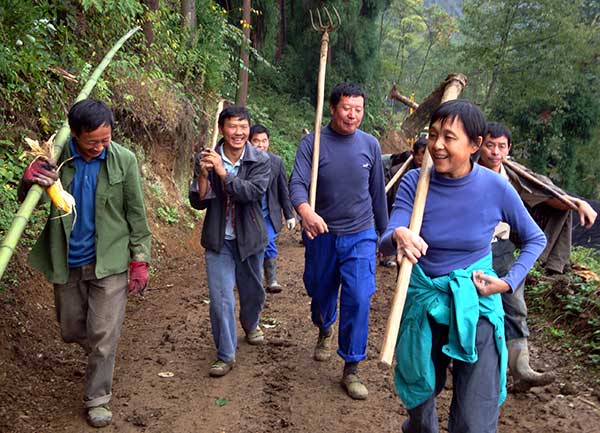TCM ethos employed to cure countryside ills
Structured society
"By providing group entertainment, we seek to reconnect hearts that have long drifted apart from one another. People talk about rural China as a loser in the country's ongoing urbanization process; about its dereliction, its brain drain and polluted land and minds," Liao said, referring to the show held a few days before the Lunar New Year festivities.
"But none of these things can be solved without adopting a holistic approach, the approach that lies at the heart of traditional Chinese medicine. For LoHo to become a way of life, it first has to become a mode of thinking, and a form of governance," the 62-year-old said.
To understand her point, one has to be familiar with the social structure and history of rural China. For millennia, the countryside was anchored by what are now called "natural villages", whose residents share the same surname and worship at the local ancestral hall. The best-respected among them were the key figures, and public life revolved around them.
The situation began to change noticeably in the 1980s, according to Liao. "Around that time, the government founded the concept of 'administrative villages' to govern at the grassroots level. On average, an administrative village is composed of 10 to 30 natural villages."
She said the law defines administrative villages as self-governing bodies, but officials are on the government payroll. "A major reason the government has formed administrative villages on top of natural ones is to cut back on public spending - the government simply can't afford to hire too many people," Liao said. "But the problem is that the officials - there are three to five for each administrative village - often struggle under a heavy burden of administrative work handed down from above, and barely have time to play their expected roles as central figures in local life."
Although a leader is elected to supervise activities, the leader's main role in every natural village, called "a group" under the current system, is as a point of contact between officials and locals, rather than someone who rallies the residents.
Consequently, traditionally close-knit rural communities have started to unravel. The process has been accelerated by the decades-long, ongoing process of urbanization and the resultant flow of residents heading to the cities for work.
In many villages, men ages 20 to 50 are rarely seen. Instead, they live far away, as migrant workers in cities and towns they can never call home. Those who remain - senior citizens, children, and the occasional young mother - lead lonely, isolated existences, where local connections are tenuous at best.























